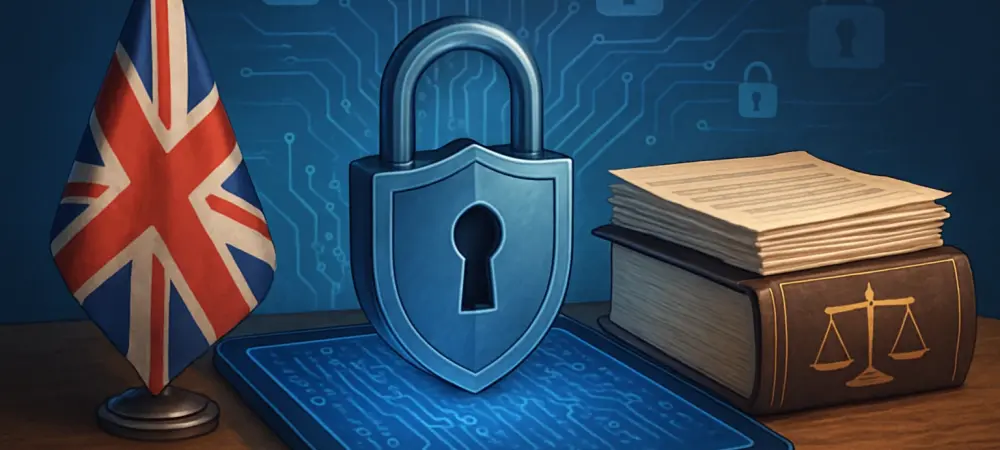In an era where digital threats loom larger than ever, the UK government has taken a decisive step by introducing a groundbreaking piece of legislation to Parliament, aimed at fortifying the nation’s defenses against an escalating wave of cyber-attacks. With high-profile incidents like the ransomware attack on NHS supplier Synnovis and state-sponsored espionage targeting the Ministry of Defence making headlines, the urgency to bolster cybersecurity has never been clearer. This new bill represents a comprehensive effort to update outdated frameworks, address sophisticated threats, and protect both critical infrastructure and the broader economy. As cybercrime continues to cost the UK billions annually, the introduction of this legislation signals a pivotal moment in recognizing cybersecurity as a national priority, setting the stage for a robust response to vulnerabilities that could undermine public safety and economic stability.
Strengthening National Digital Defenses
Updating Regulatory Frameworks
The newly proposed legislation marks a significant overhaul of the UK’s existing Network and Information Systems (NIS) Regulations, originally established in 2018. This update aligns with the need to address modern cyber threats that have grown in complexity and impact over the years. A key focus is on bringing managed service providers (MSPs) under regulatory oversight for the first time, affecting an estimated 900 to 1,100 additional firms. Furthermore, critical suppliers will now be required to meet minimum security standards, ensuring a baseline of protection across essential services. The bill also introduces stricter obligations for operators of essential services (OES) to manage supply chain risks, aligning security requirements with the National Cyber Security Centre’s (NCSC) Cyber Assessment Framework (CAF). This comprehensive approach aims to close gaps in the current system, ensuring that all players in the digital ecosystem contribute to a fortified national defense against cyber threats.
Enhancing Incident Reporting and Oversight
Another critical component of the legislation is the tightening of incident reporting rules to ensure rapid response and transparency during cyber incidents. Organizations will be mandated to submit initial notifications within 24 hours of detecting a breach, followed by detailed reports within 72 hours. This applies not only to OES but also to digital and data center providers, who must inform customers of breaches promptly. Additionally, the scope of the bill extends to include data center providers and entities managing electricity flow to smart appliances, reflecting the interconnected nature of modern infrastructure. The Information Commissioner’s Office (ICO) will gain expanded powers to proactively assess cyber risks among critical digital service providers, ensuring potential vulnerabilities are identified before they can be exploited. These measures collectively aim to create a more responsive and accountable cybersecurity environment across the UK.
Addressing Economic Impacts and Collaboration
Quantifying the Cost of Cybercrime
The economic toll of cyber-attacks on the UK is staggering, with annual losses estimated at £14.7 billion, equivalent to 0.5% of the nation’s GDP. The average cost of a significant cyber incident exceeds £190,000, placing immense financial pressure on businesses and public services alike. This legislation comes as a direct response to these alarming figures, seeking to mitigate the damage by enforcing stricter security protocols and penalties for non-compliance. Regulators will also introduce a new fee structure to recover costs, ensuring that the financial burden of oversight is shared among those benefiting from digital infrastructure. Tougher turnover-based penalties for serious violations further underscore the government’s commitment to holding organizations accountable, aiming to deter negligence and encourage proactive investment in cybersecurity measures that protect both economic and national interests.
Fostering Government and Industry Partnership
Beyond regulatory changes, the bill emphasizes the importance of collaboration between the government and private sector to tackle the multifaceted challenges of cybersecurity. Industry leaders, such as Matt Houlihan from Cisco, have highlighted the need for clear and practical guidance to ensure effective implementation of the new rules. Addressing vulnerabilities like unsupported, end-of-life equipment remains a priority, as these weak links in infrastructure often serve as entry points for attackers. The NCSC has also urged organizations to act swiftly by adopting its guidance, reinforcing the idea that cybersecurity is a shared responsibility. This collaborative spirit is seen as essential to meeting the complex needs of organizations across various sectors, ensuring that the UK can stay ahead of evolving threats through a united front that leverages both public and private expertise.
Final Reflections on a Safer Digital Future
Building a Resilient Tomorrow
Looking back, the introduction of this transformative legislation to Parliament stood as a defining moment in the UK’s fight against cyber threats. It responded directly to the pressing need for updated defenses, reflecting a unified understanding that proactive measures were indispensable. The expansion of regulatory oversight, coupled with stringent incident reporting and enhanced penalties, laid a strong foundation for protecting essential services from sophisticated attacks that had previously exposed critical vulnerabilities.
Charting the Path Forward
As the bill moved through parliamentary debate, the focus shifted to actionable next steps, including the development of detailed implementation plans to support affected organizations. Stakeholders were encouraged to prioritize investments in modern security solutions and training to meet the new standards. The potential for this legislation to set a global benchmark in balancing strict requirements with practical compliance offered hope for a more secure digital landscape, paving the way for future innovations in cybersecurity policy and practice.

